This post contains affiliate links, which means I may earn a commission if you purchase through those links (at no extra cost to you).
I grew up making Orange Marmalade the old-fashioned way: soaking citrus overnight and boiling it rigorously to extract the natural pectin in the rind. When you follow my technique, you don’t need to add any store-bought pectin, and you get the best, cleanest-tasting marmalade.
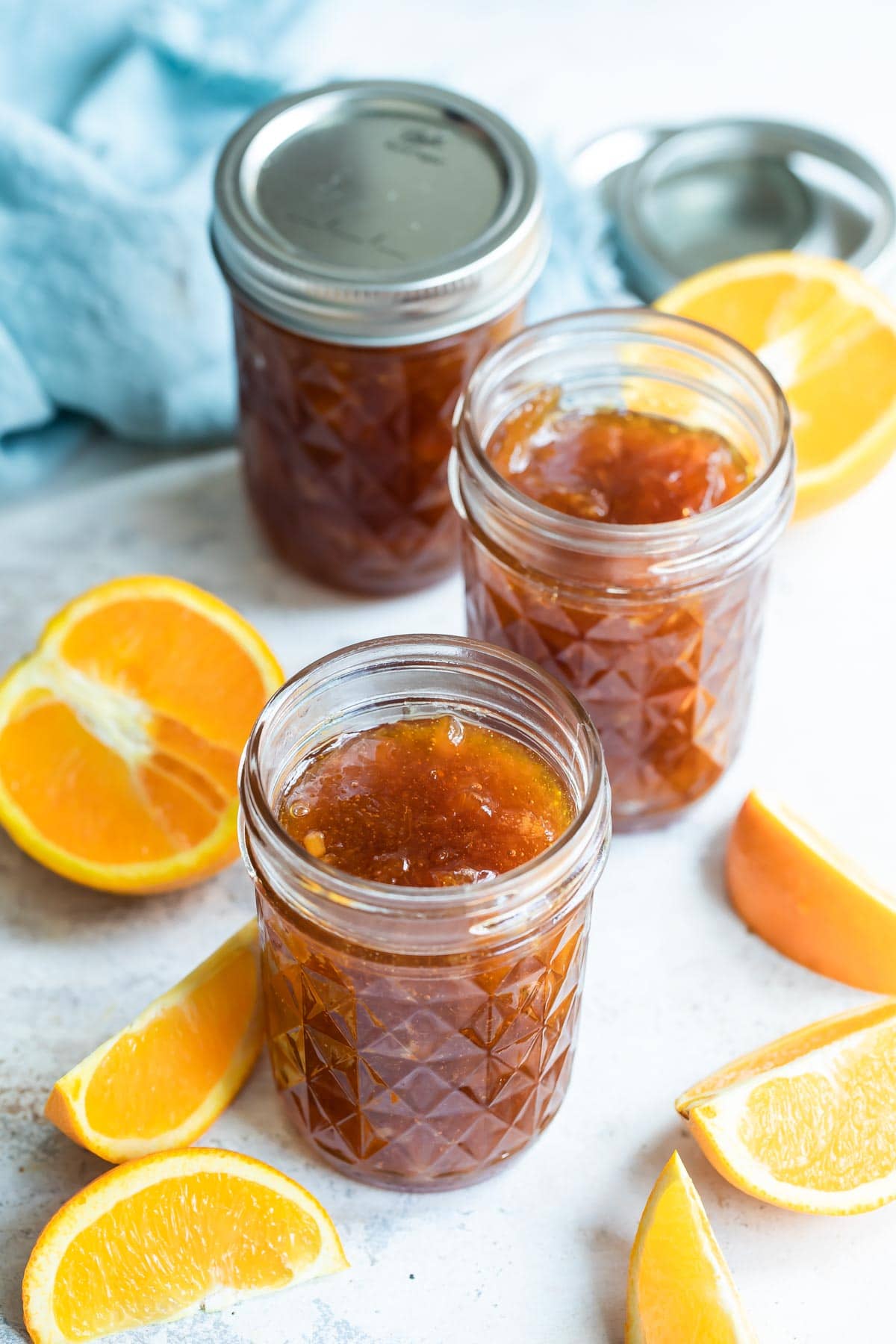
Nearly 1,000 5-star reviews prove this unfussy technique is simple and easy to follow. I also include my handy “cold plate test” so you can know for sure whether your marmalade is done or needs a little bit more time on the stove.
Home cooks everywhere are putting their abundant citrus to use to make their own homemade marmalade, and now you can, too. This recipe makes about 3 quarts total, or 12 (8 ounce jars). It freezes beautifully or you can process it in a water bath for canning.
Table of Contents
Marmalade Ingredients
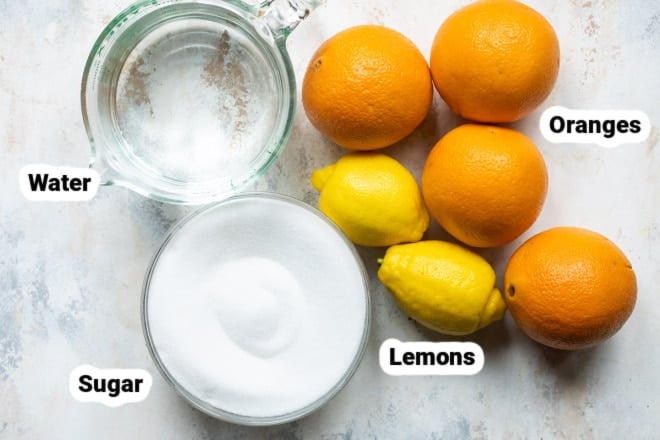
At a Glance: Here is a quick snapshot of what ingredients are in this recipe.
Please see the recipe card below for specific quantities.
- Oranges: This recipe is made with regular seedless oranges. You can definitely substitute Seville oranges if you can find them. They are only in season from the end of January to mid-February, but they have an intense flavor that is ideal for marmalade.
How to make Orange Marmalade
- Using a sharp knife, cut oranges and lemons in half crosswise, then into very thin half-moon slices. Discard any seeds. In a large pot (stainless steel), add the sliced oranges, lemons, and any fruit juice.
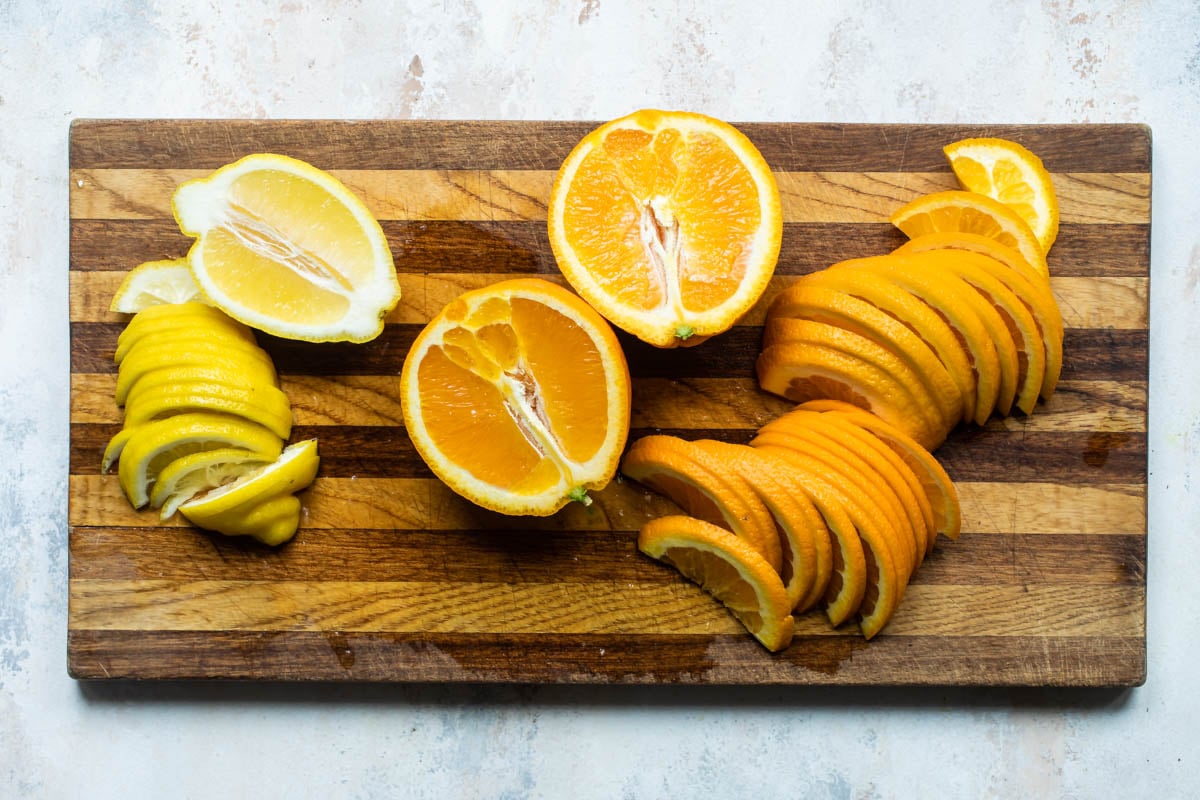
- Add water and bring the mixture to a boil over medium heat, stirring often. Remove from the heat and stir in the sugar until it dissolves. Cover and let stand overnight at room temperature.
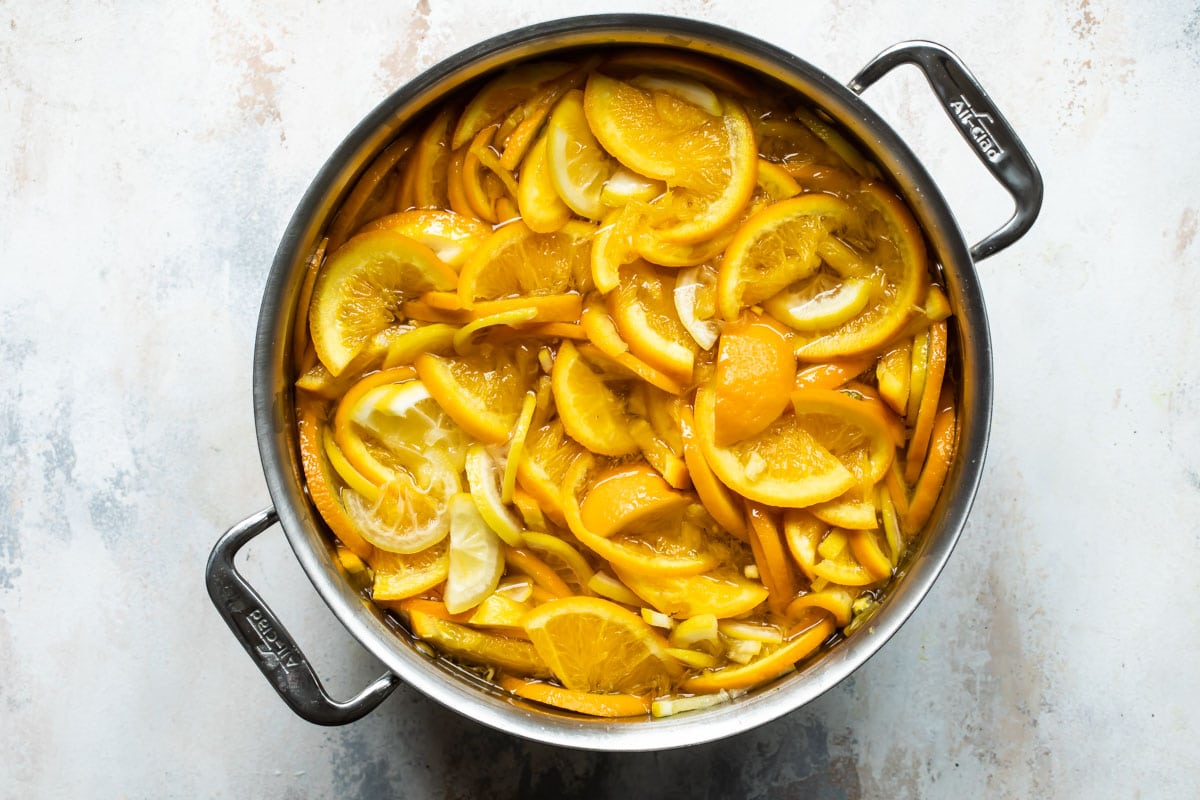
- The next day, bring the mixture back to a boil in the pot or saucepan. Reduce heat to low and simmer uncovered for 2 hours. Turn heat up to medium and boil gently, stirring often, for another 30 minutes. Skim off any foam that forms on the top. Cook until it reaches 220 degrees on a candy thermometer (you must hit this temperature for the natural pectin to gel with the sugar).
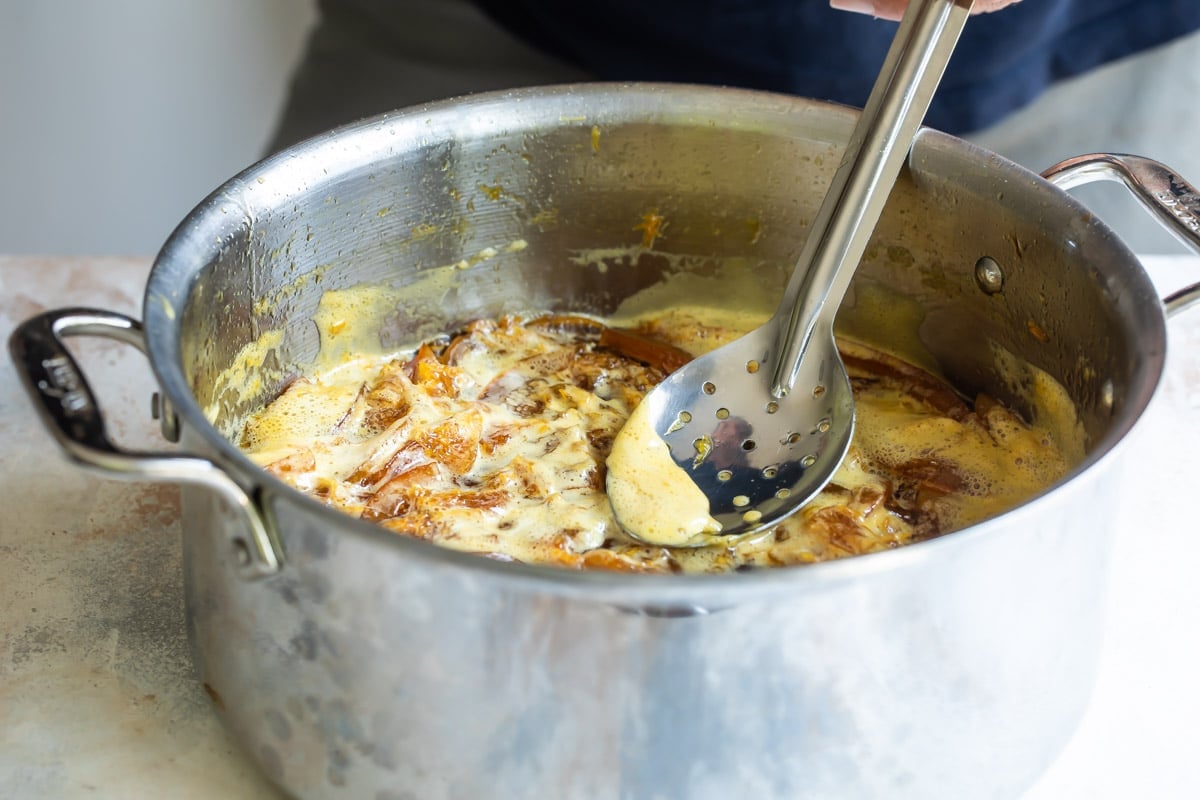
- To test if the marmalade is ready, place a small amount on a plate and refrigerate it until it’s cool but not cold. If it’s firm (neither runny nor hard), it’s ready. It will be a golden orange color. If it’s still runny, continue cooking it; if it’s hard, add a bit more water.
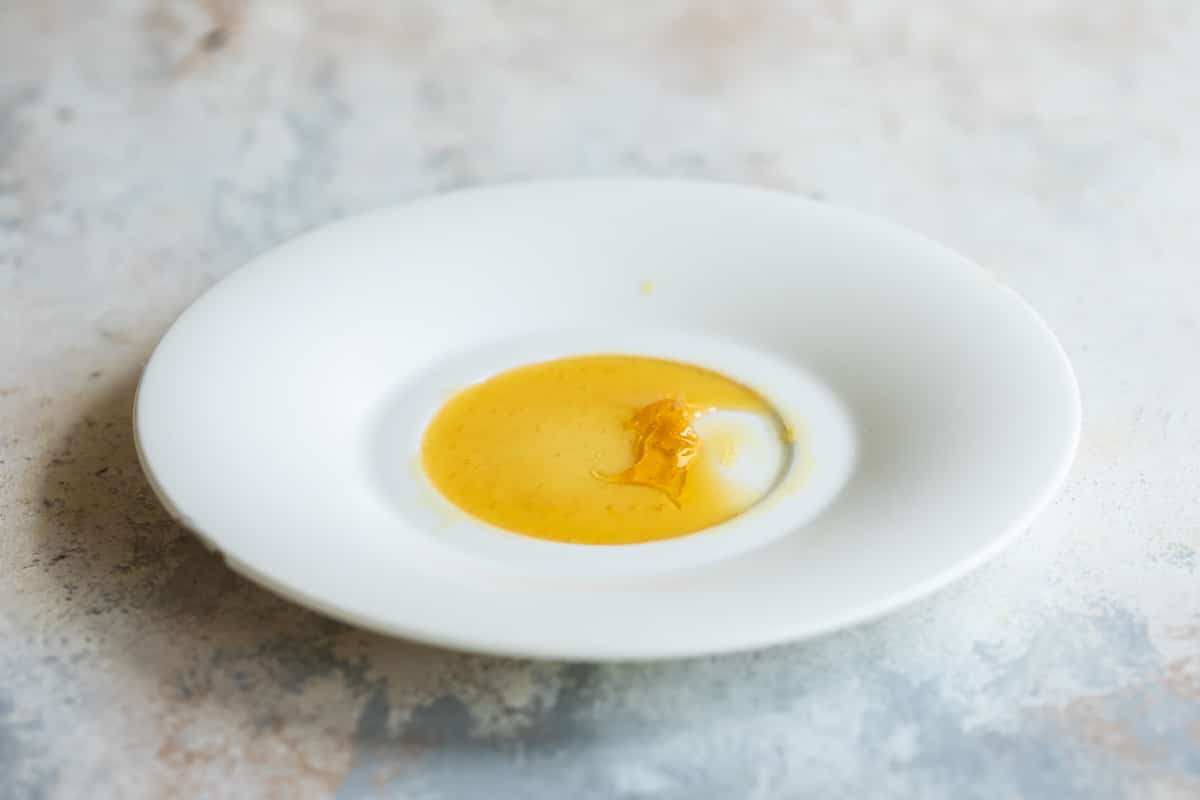
- Pour or ladle the marmalade into clean hot mason jars (I use this wide-mouth jar funnel for this recipe and so many others). Wipe the rims thoroughly with a clean damp paper towel, and seal with the lids. Chill in the refrigerator. It may take 24-48 hours for the natural pectin to set up properly.
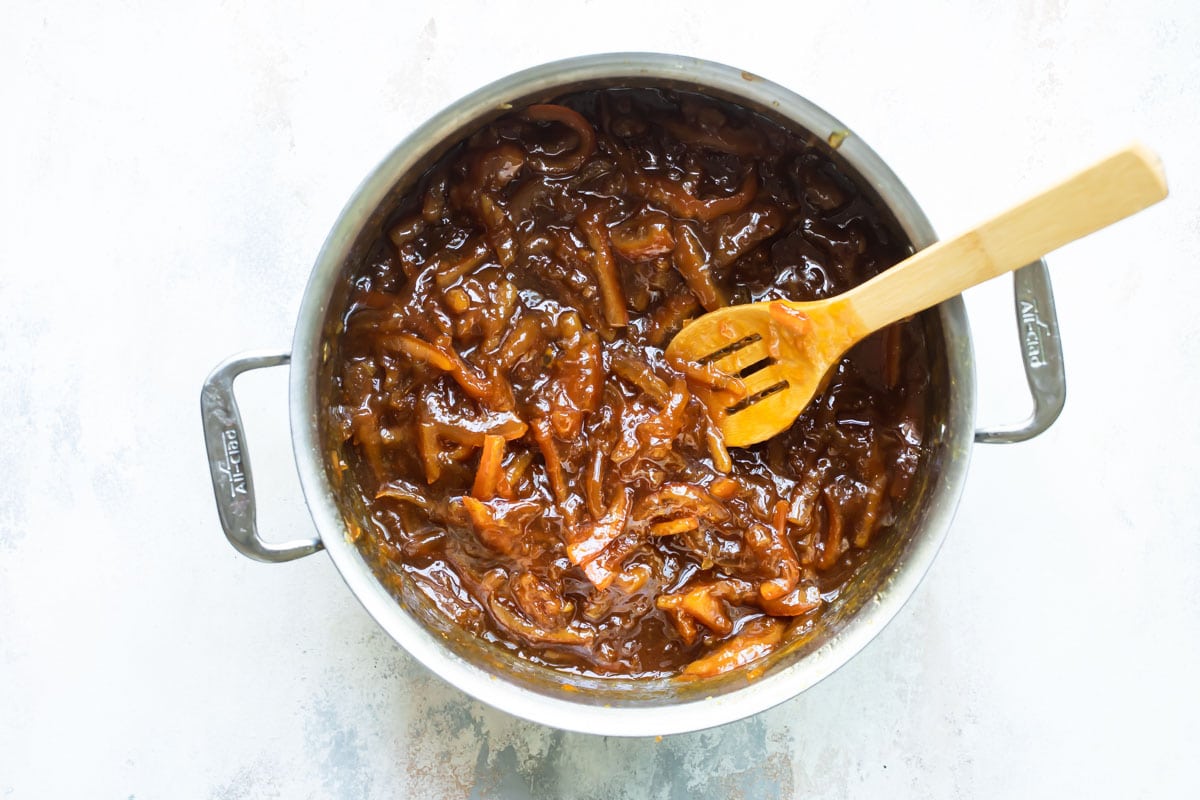
Orange Marmalade Recipe Variations
- Pectin: While many jam and jelly recipes require added pectin, you don’t need to add any here. Pectin is naturally concentrated in the pith of the orange (the bitter white part under the peel). This recipe coaxes out that natural pectin by letting the citrus soak overnight and then boiling it rapidly until enough water has evaporated that the mixture can reach 220 degrees.
- Agave nectar: Agave cannot penetrate and sweeten the peel as well as sugar can. When I tested it, the consistency was fine, but the rind tasted like raw rind. I don’t recommend this substitution.
- Low sugar: I haven’t tested low-sugar/alternative sweeteners in this recipe other than agave as listed above nor have I tweaked the amount of sugar in the recipe. I recommend seeking out recipes from experts in that area.
- Slow cooker: While it is technically possible to make marmalade in your slow cooker, it really depends on the power of your appliance. I no longer recommend that method because it isn’t reliable enough.
- Instant pot: Even with an overnight soak, the IP doesn’t break down the rind sufficiently. I don’t recommend this method.
Marmalade Recipe Tips
- Yield: This recipe makes about 3 quarts (96 ounces) of marmalade.
- If using 1/2-pint (8 ounce) jars, you’ll need 12.
- If using 1 pint (16 ounce) jars, you’ll need 6.
- If using the tiny jelly jars (4 ounce), you’ll need 24.
- Cold-plate test: To test if your marmalade is ready, spoon some hot marmalade on to a small plate and put it in the freezer to chill, or spoon some over an icy cold plate fresh from the freezer. If the mixture wrinkles slightly when you draw a spoon or finger across it, it has reached the setting point and is ready to go! If not, keep boiling and make sure the temperature reaches 220 degrees.
- Set-up time: Orange marmalade takes 24-48 hours for the natural pectin to set up completely. If it’s is still a little runny looking when it cools, check again in a day or two.
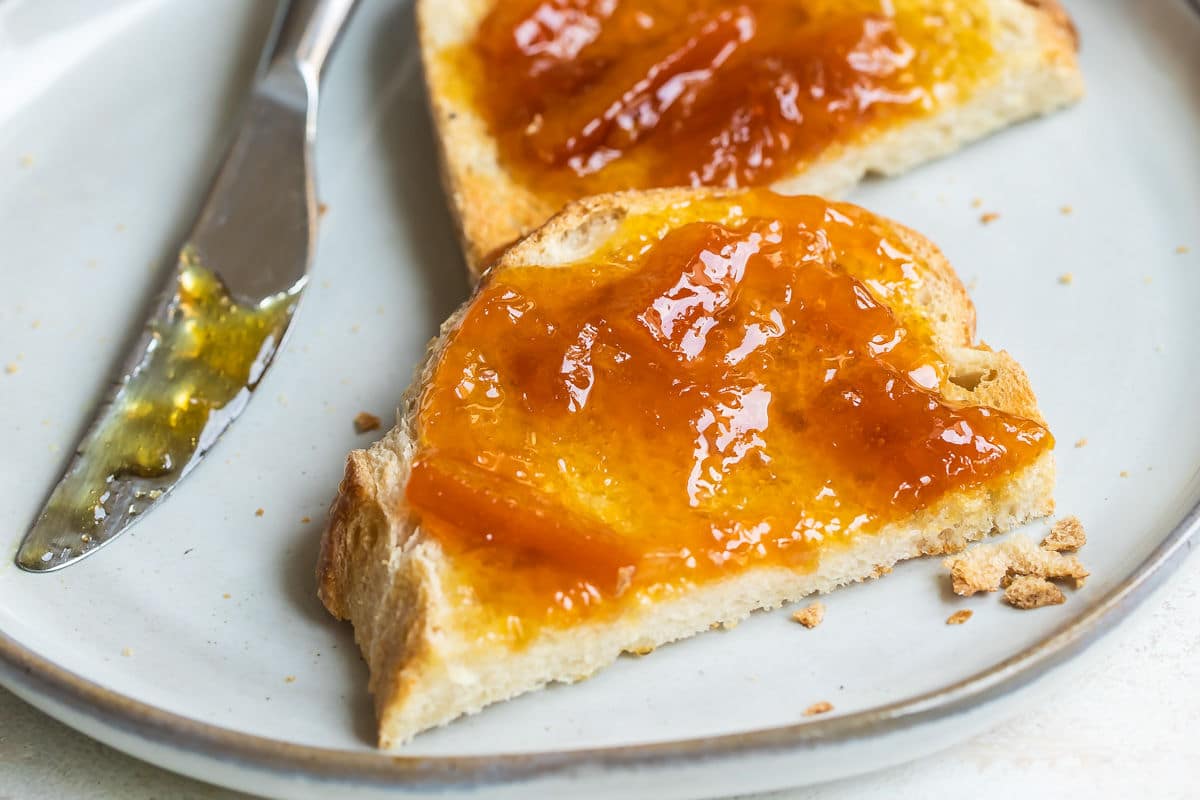
Storing and Canning Orange Marmalade
Storage: Store covered in the refrigerator for up to 1 month.
Freezer: Pack in freezer-safe containers or jars leaving 1/2-inch of headspace for expansion. Label, date, and freeze for up to 3 months. Thaw overnight in the refrigerator.
Canning: If putting up for storage, use a hot water or steam canner with a rack to properly seal lids on canning jars according to canning instructions. Otherwise, refrigerate and use within the month. Or, freeze for up to 3 months.
Frequently Asked Questions
Pectin is naturally concentrated in the pith of the orange (the bitter white part under the peel), so you don’t need to add any here. This recipe coaxes out that natural pectin by letting the citrus soak overnight and then boiling it rapidly until enough water has evaporated that the mixture can reach 220 degrees.
While it is technically possible to make marmalade in your slow cooker, it really depends on the power of your appliance. I no longer recommend that method because it isn’t reliable enough.
Even with an overnight soak, the IP doesn’t break down the rind sufficiently. I don’t recommend this method.
Agave cannot penetrate and sweeten the peel as well as sugar can. When I tested it, the consistency was fine, but the rind tasted like raw rind. I don’t recommend this substitution.
I don’t recommend making this recipe in a regular cast iron pan. It should be made in a non-reactive pan. Enameled cast iron, stainless steel, and non-stick are best and will not affect the color or taste of the marmalade
More fruit recipes
Pie and Tart Recipes
Fresh Fruit Tart
Fruit Dessert Recipes
Apple Crisp with Oatmeal
Cake Recipes
Lemon Bundt Cake Recipe
Muffins and Quick Breads
Banana Muffins
Join Us

Orange Marmalade
Equipment
- Jar funnel (for wide mouth jars)
Ingredients
- 4 large seedless oranges scrubbed clean (about 3 pounds or 8 cups slices, see note 1)
- 2 lemons (about ½ pound or 1 cup slices)
- 8 cups water
- 8 cups granulated sugar
Instructions
- Cut oranges and lemons in half crosswise, then into very thin half-moon slices. Discard any seeds. In a large stainless steel pot, add the sliced oranges, lemons, and any accumulated juices.
- Add water and bring the mixture to a boil, stirring often. Remove from the heat and stir in the sugar until it dissolves. Cover and let stand overnight at room temperature.
- The next day, bring the mixture back to a boil. Reduce heat to low and simmer uncovered for 2 hours. Turn heat up to medium and boil gently, stirring often, for another 30 minutes.
- Skim off any foam that forms on the top. Cook the marmalade until it reaches 220 degrees (you must hit this temperature for the natural pectin to gel with the sugar).
- To test if the marmalade is ready, place a small amount on a plate and refrigerate it until it's cool but not cold (see note 4). If it's firm (neither runny nor hard), it's ready. It will be a golden orange color. If the marmalade is runny, continue cooking it; if it's hard, add a bit more water.
- Pour the marmalade into clean hot mason jars; wipe the rims thoroughly with a clean damp paper towel, and seal with the lids. Chill in the refrigerator. It may take 24-48 hours for the natural pectin to set up properly.
Recipe Video
Notes
- Oranges: This recipe is made with regular seedless oranges. You can definitely substitute Seville oranges if you can find them. They are only in season from the end of January to mid-February, but they have an intense flavor that is ideal for marmalade.
- Yield: This recipe makes about 3 quarts (96 ounces) of marmalade.
- If using 1/2-pint (8 ounce) jars, you’ll need 12.
- If using 1 pint (16 ounce) jars, you’ll need 6.
- If using the tiny jelly jars (4 ounce), you’ll need 24.
- Storage: Store covered in the refrigerator for up to 1 month.
- Cold-plate test: To test if your marmalade is ready, spoon some hot marmalade on to a plate and put it in the freezer to chill, or spoon some over an icy cold plate fresh from the freezer. If the mixture wrinkles slightly when you draw a spoon or finger across it, it has reached the setting point and is ready to go! If not, keep boiling and make sure the temperature reaches 220 degrees.




When you bring mixture to a boil, before adding the sugar, Do you boil it for some time or just when starts boiling it’s ready to add the sugar, mixing well ? And then leave it overnight…
Another question: Is it possible to discard part of the rinds?
Hi Susana, thanks for writing! Once it boils, remove from the heat and add the sugar. No need to boil longer. The rind is needed for the pectin, so I haven’t tried to remove it during the cooking process. It might be possible? I can’t say for sure. I would try a recipe developed to make marmalade without the rind (shredless) so your marmalade turns out correctly. Sorry about that! – Meggan
I was at the boil then simmer gently for two hours. Where sugar is concerned I always store often to stop sticking to the bottom. I was just finished storing and admiring the colour of the marmalade. I came back to the pot 5 minutes later and it reduced so much and was stuck to the bottom with 20 minutes boiling still left. The actual liquid part was like toffee and the pot was completely ruined. I’d love a reply as to what I did wrong? After all the work I went through slicing etc, I’m so dissapointed. My big pasta/jam pot looks like a molten volcano!
Hi Miss Karen, that sounds awful, I’m so sorry! It sounds like your mixture reached 220 degrees while you stepped away or your heat was too high during step 3, so the simmering time was less. If you still have the batch or this happens again with another batch, you may be able to rescue it by adding more water and allowing it to simmer longer to dissolve the hard sugar mixture and set it with the right consistency. I recommend using a candy thermometer to help monitor the batch while it’s simmering. I’m so sorry again your marmalade wasn’t right. – Meggan
I followed the recipe and the marmalade looks great and tastes super great… At first… but there is a slight bitter aftertaste that has been in my mouth for an hour now from some I tasted while I was canning. I used Navel oranges and the pith was pretty thick so I am wondering if I just got a random natural over the top pith thickness that causes mine to have the extra bitterness. Will it mellow at all while it cools and sets in the jars? I am going to try this again with either a different type of orange, or I will trim some of the thicker pitch away.
Here is an Imgur link to pictures of my orange/lemon slices, my filled jars and some marmalade spread on some sourdough toast.
https://imgur.com/a/rX55QDp
I am at the step where I am simmering for two hours and the peels taste extremely bitter and not good at all. Is that normal at this stage? I had thought the overnight soak would have made them taste more pleasant.
Hi Jeremy, yes, especially if you’ve just begun simmering. The 2 hour simmering process and 30 minute boiling reduces the bitterness and allows the pectin to gel with the sugar in the mixture. The overnight soak allows the oranges and rinds to cook properly. – Meggan
The pictures of the cut oranges look like the peel is quite lengthy, but the pictures of the marmalade itself, they look much smaller/shorter.
Did you cut them smaller or do they break apart? I am a little worried about a a half orange slice length, being annoying when trying to get the marmalade out of the jar and spreading it.
Hi Jeremy, I find the size of the rind to be great, but if you prefer them smaller, one reader shared they used a potato masher to break up the rind more, and another shared they used an immersion blender. I hope you love it! – Meggan
Meggan. Hi I have an orange tree with miniature oranges suitable for marmalade there tart. Has anyone tried this and is there a way to cut the sugar I usually use raw or or honey 🍯 would this work? Thanks so much Pam G
Hi Pamela, other readers have reduced the sugar and enjoyed the results. I found honey doesn’t work well in this recipe, it doesn’t penetrate the rind as well as sugar. I hope you enjoy this marmalade! – Meggan